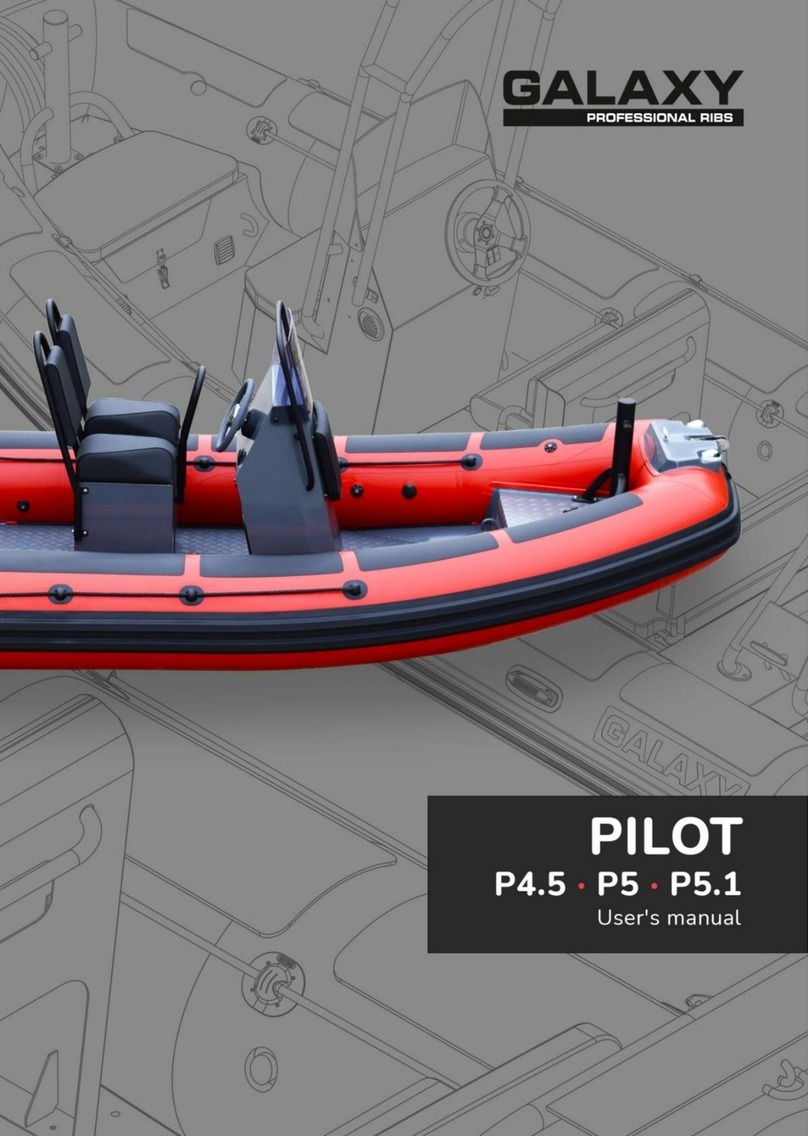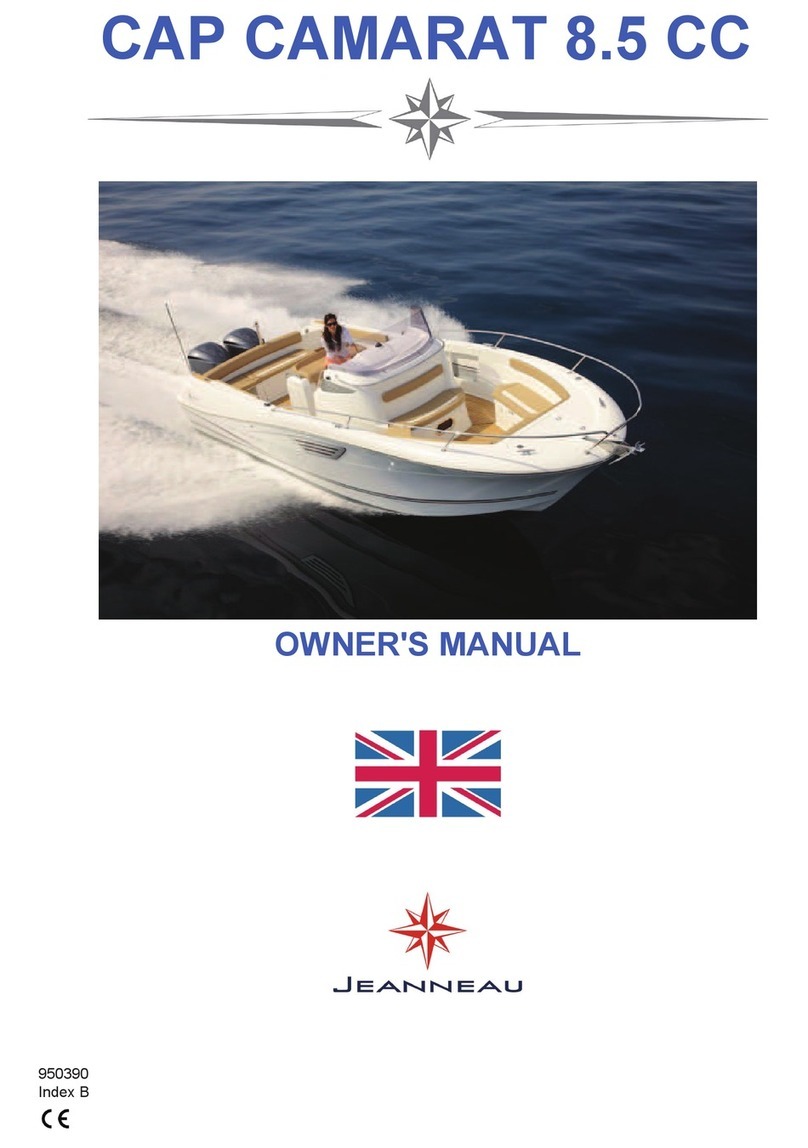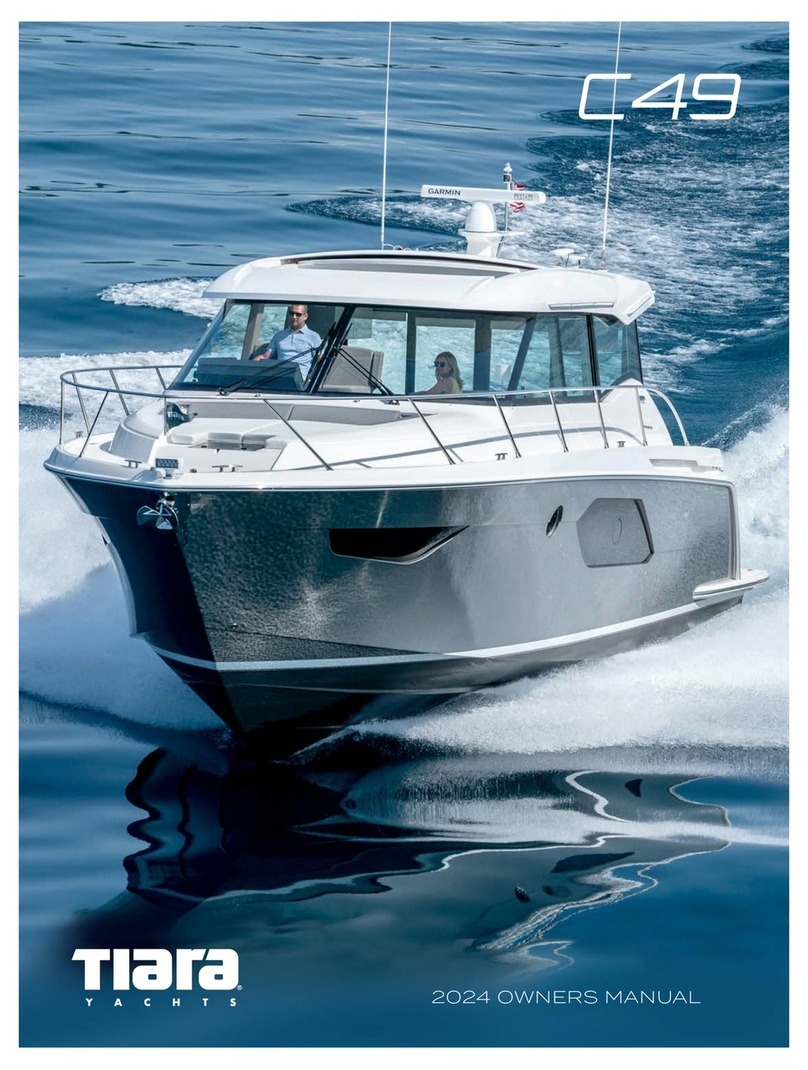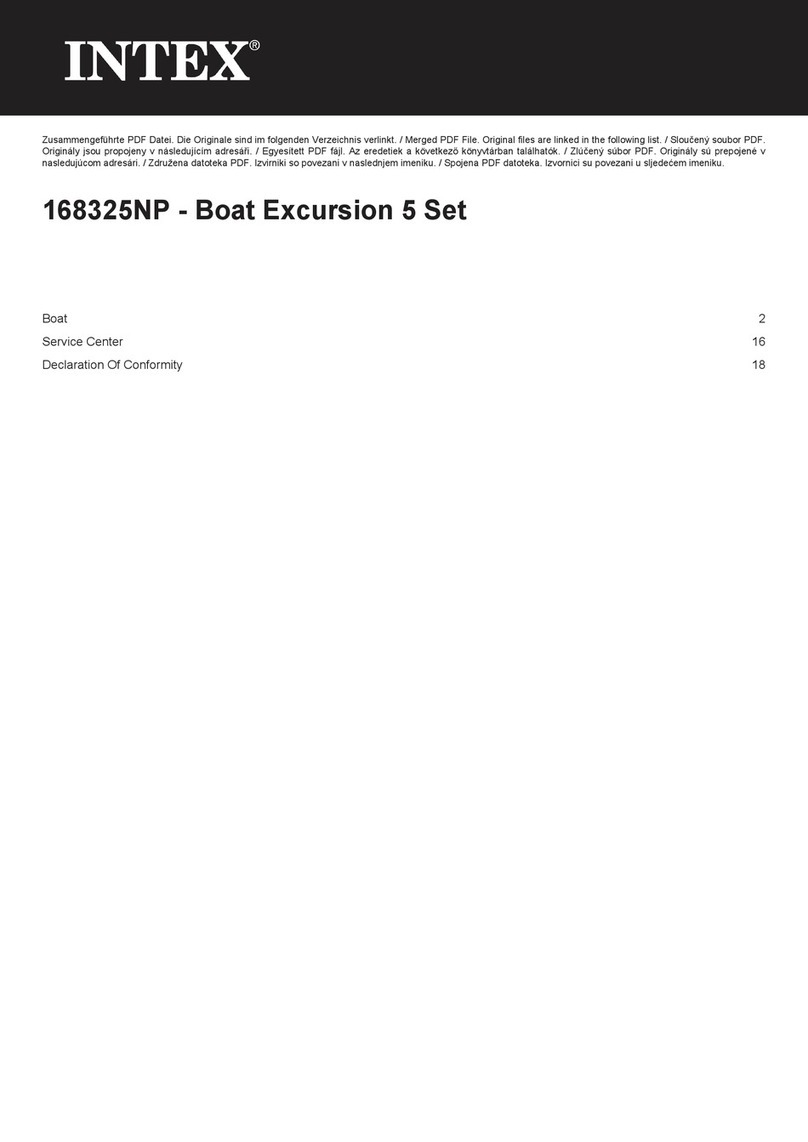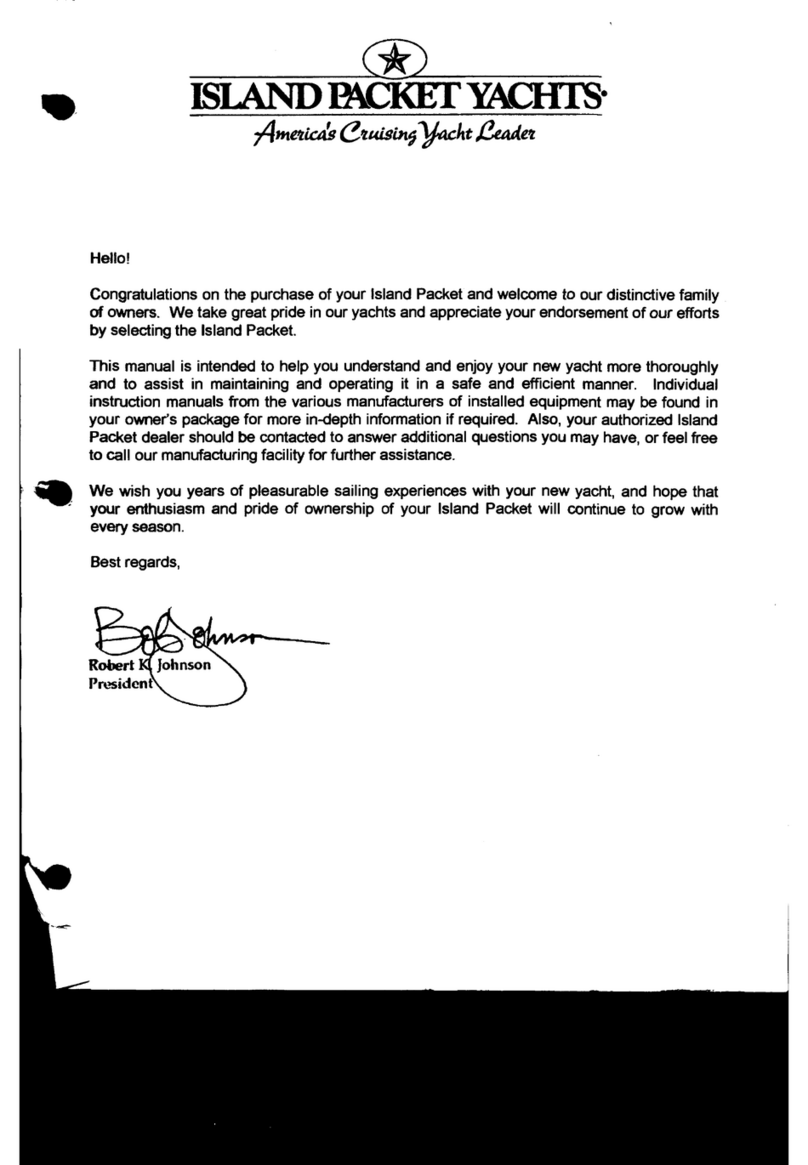4. BOAT ASSEMBLING
Step 1:
Open the boat
Step 2:
Assemble and install
steering console
Step 3:
Install outboard motor
Step 4:
Inflate the boat
•Inspect the condition of the package for and report to
your dealer if you find any damages;
•Remove all the packaging plastic and cardboard
arefully. Do not use knife;
•Check the completeness of the boat and make sure
that no any parts are missing. You must report the
missing part to your dealer immediately.
Unpack the steering console. Connect and secure the
steering cable to the steering system. Install steering
wheel. If your boat is expected to feature electric start –
install the battery tray on the deck under steering
console. Assemble and mount control box on the right
side of the console. Make sure the handle in upper
position does not touch the railing. Install the steering
console on the deck with bolts with washers and tighten
them.
Install the outboard motor following the motor user’s
manual.
•Open the pump, connect the pump hose to the pump
onto inflation opening;
•Connect bayonet adapter of the pump hose to the
valve;
•First, inflate the aft compartments to a pressure slightly
below the nominal pressure, then the middle ones, and
finally the bow compartment to the nominal pressure.
In this case the flexible baffles in the tube will move
towards the rear compartments and equalize the
pressure in all compartments. You may use the
manometer to measure the pressure level to ensure
the best performance of the boat and make sure that
the pressure is about nominal level. Nominal tube
pressure is mentioned on Capacity Plate
IMPORTANT!!! WE STRONGLY RECOMMEND THE BOAT
ASSEMBLING AND THE OUTBOARD MOTOR RIGGING
TO BE MANAGED BY CERTIFIED BOAT DEALER ONLY
7
OVERINFLATING AND OVERHEATING OF YOUR BOAT MAY
CAUSE THE BOAT DAMAGE. AVOID OVERPUMPING THE
BOAT, LEAVING THE BOAT NOT COVERED, USING HIGH-
PRESSURE INFLATORS. USE MANOMETER TO CHECK THE
PRESSURE IN THE TUBE REGULARLY






